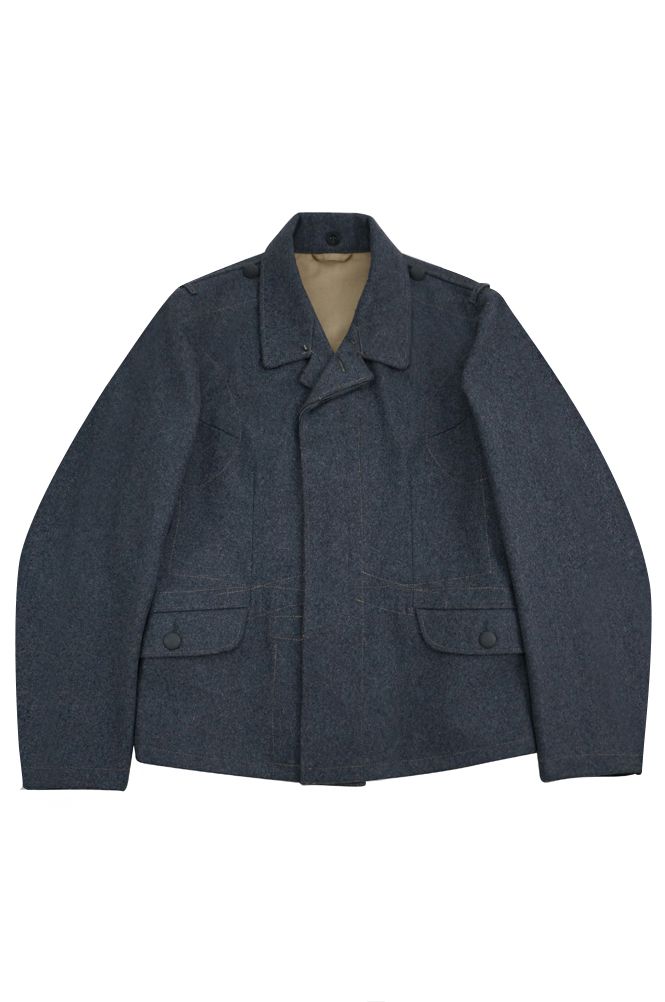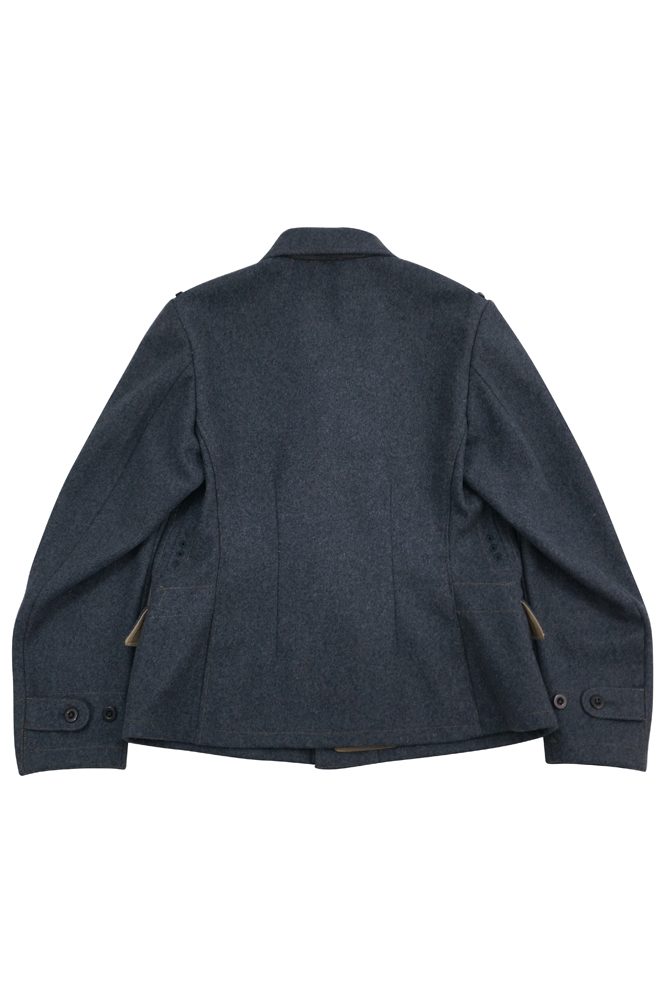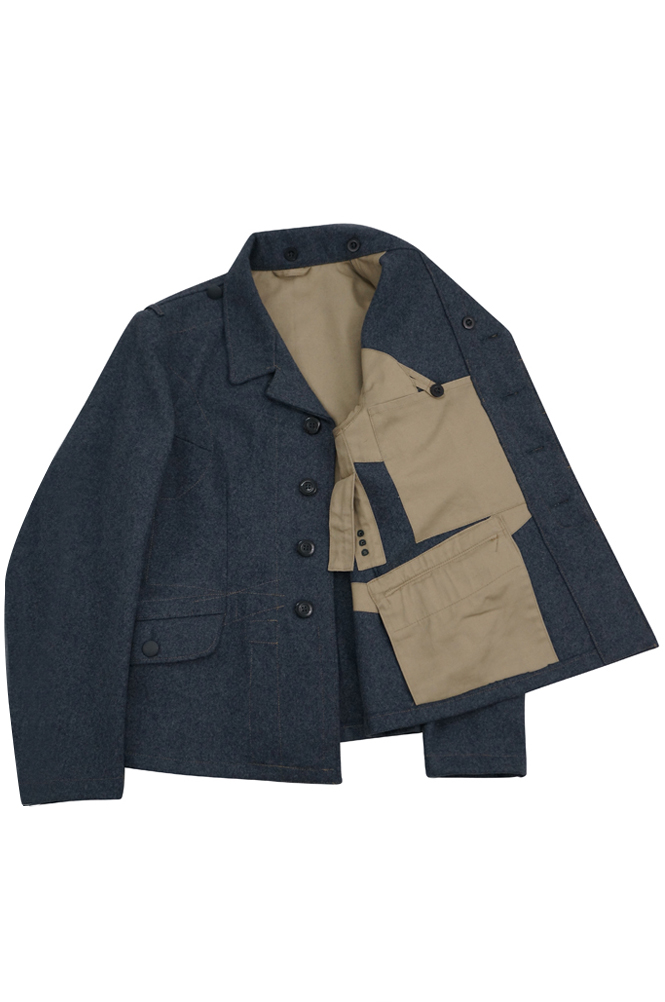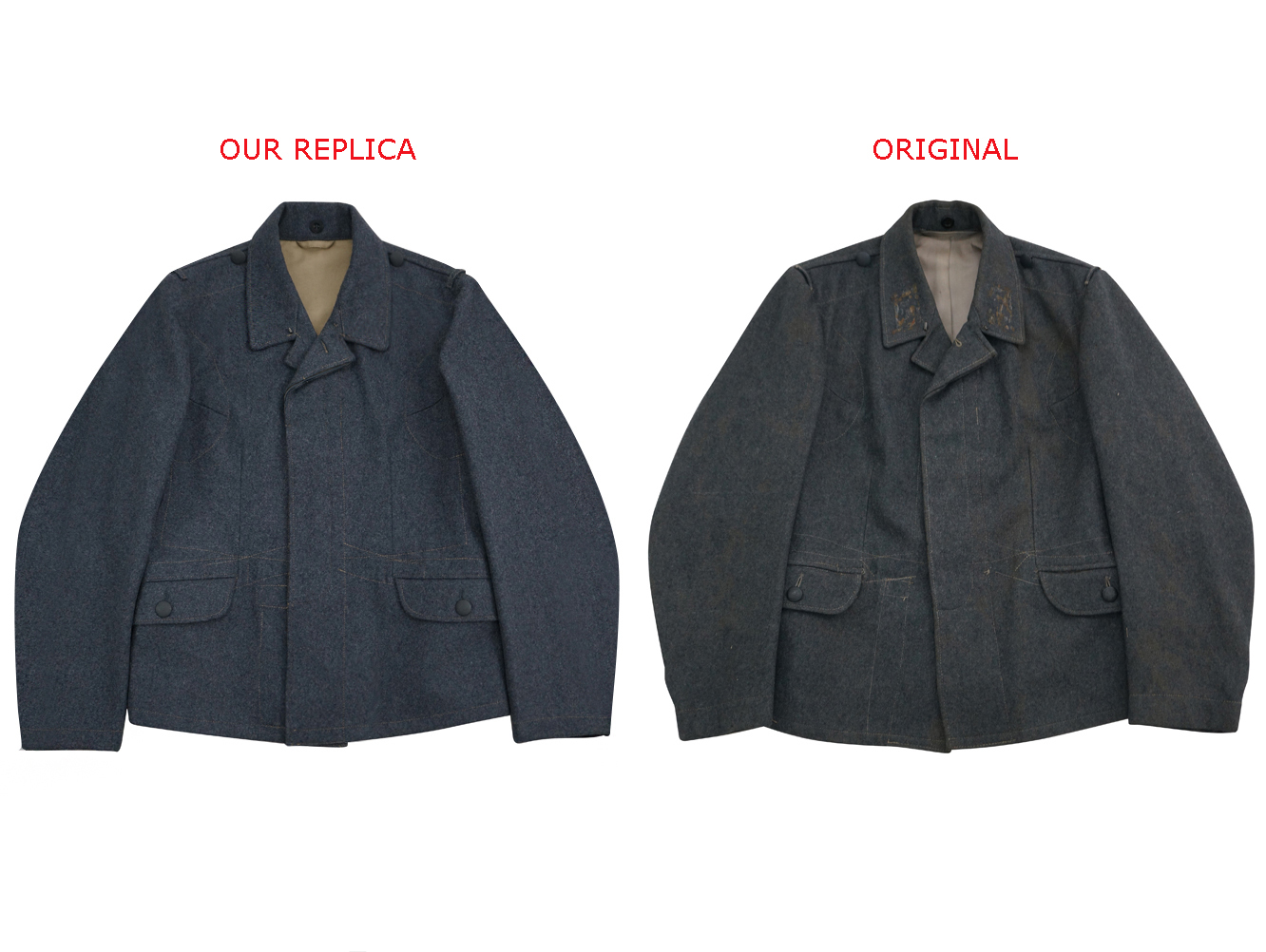The flyer’s blouse was made of blue-grey basic cloth with the cut of two front panels, one back panel, two panels for each sleeve and the collar. The length was approximately 5cm shorter than the length of the tunic. Front and back panels were connected by lateral and shoulder seams, and the bottom edges was turned inward 1.5cm wide. And seamed. The front panels extended 4cm over the breast center line. Both front edges had a sewn-on interior reinforcing stripe measuring 9cm wide above and 7 cm wide at the bottom, on the right edge made of basic cloth, and on the left edge made of ling fabric. On the left edge was a buttonhole tape of basic cloth with lining fabric of the same measurements that was open at the edge from 1cm below the upper edge to 5cm below the lowest buttonhole, but sewn to the front edge below. Five button-holes were distributed on the tape: the uppermost one 2cm below the upper edge of the panel and 3.5cm from the front edge, the lowest one below the waistline and 3cm from the front edge, and the others evenly distributed between at the center distance between the buttonholes the tape was connected with the front panel by short horizontal seams. Five black buttons were positioned correspondingly to the right front, with the uppermost button smaller than the others. Two tucks in each front panel provided for a better fit. One reached from the armpit downwards, and the other was positioned in the waistline at the front. With large size blouses the tucks could be omitted or opened if necessary. The sleeves were slightly curved and tapered slightly from the elbow down, with the rear seam running over the elbow. The bottom was turned 4cm wide inside and seamed. A 4cm wide and 7.5cm long tape of double laid basic cloth was inserted into the rear seam approximately 3cm above the bottom edge. The free end of the tape was rounded and with a buttonhole, and was buttoned forwards on the body side of the sleeve by a small black button. A second button was in 3cm distance from the front sleeve seam, and served to narrow the sleeve by buttoning the tape to it. The construction of the collar allowed for an open or closed wear. When worn open, the uppermost front button was not buttoned, and the lapels reached to the second buttonhole/button. When closed, the collar was hooked by a metal hook (right) and an eye (left), and the corners of the collar were approximately 5.6cm apart. The lay-down part of the collar was 5cm wide at the front and 4.7cm at the back. The collar had an interior stiffening inlay that was connected to the underside by criss-cross seams. In the closed position the lapels were held by a tab and a button. The tab of double laid basic cloth was 9cm long and 3.5cm wide, and its front edge was sewn to the left underside of the collar at a distance of 2cm from the front edge. If not used it was buttoned to the rear by a 2cm wide buttonhole near it’s rounded end and a button correspondingly placed. The tab of the closed collar was buttoned to one of two small plastic buttons placed on the right reverse of the collar at a distance of 4cm and 6-7cm from the front edge. Five small buttons to button the collar liner were sewn on the inner side of the collar approximately 2.5cm below the lay-down edge, with distances to accommodate the buttonholes of the collar liner……..
<uniform & traditions of the luftwaffe by John R. Angolia & Adolf Schlicht>
|
Luftwaffe EM/NCO blue grey wool flight tunic Fliegerbluse
Item news update: 2021. Mar. 9 - Luftwaffe EM/NCO blue grey wool flight tunic Fliegerbluse













Leave A Comment